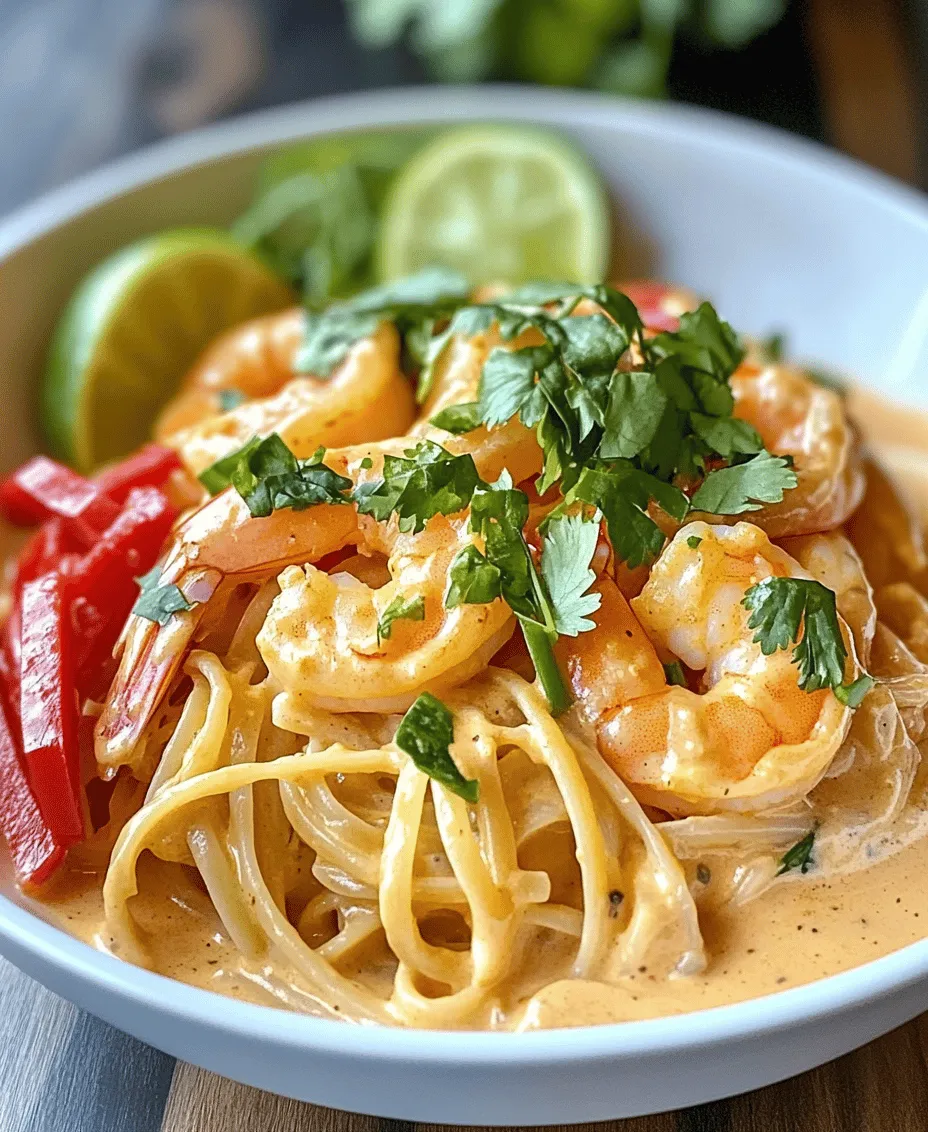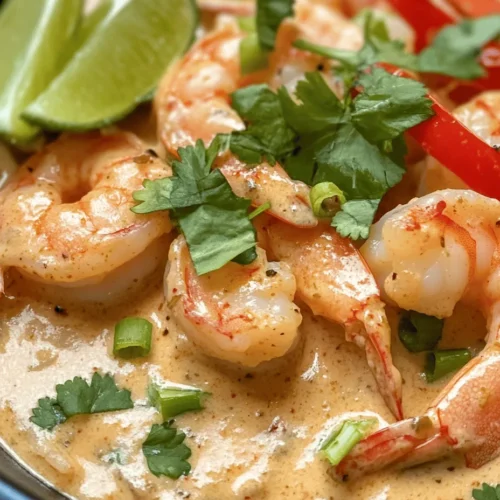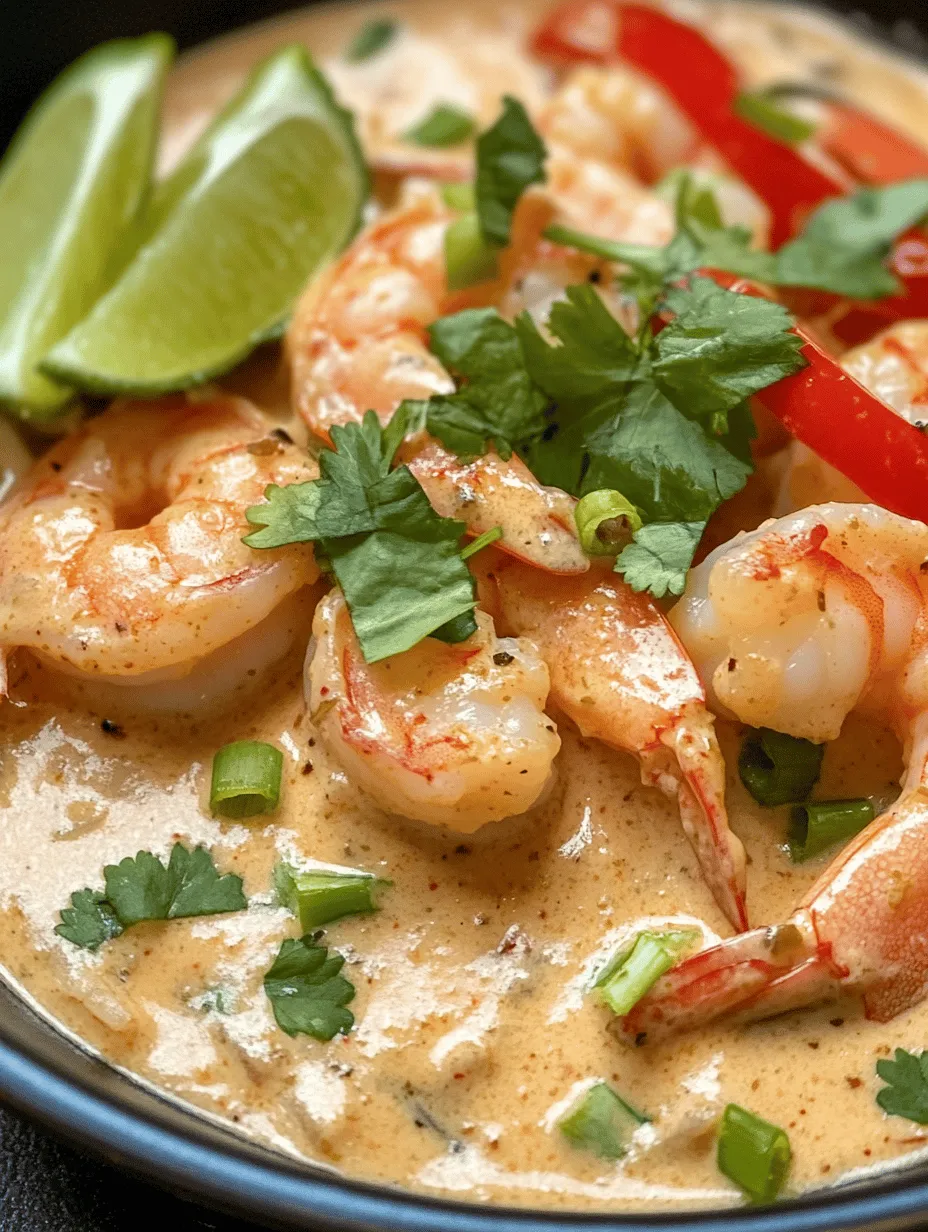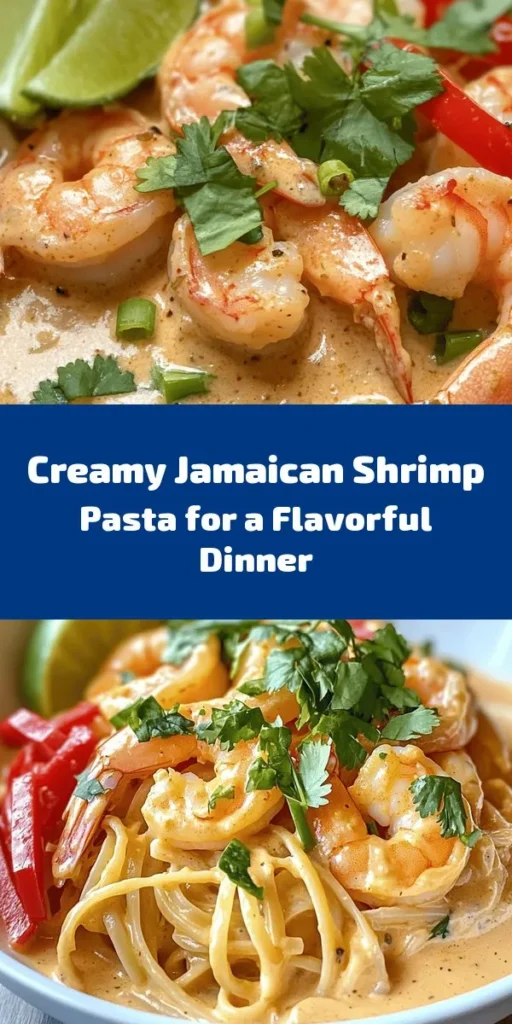Introduction
Jamaican cuisine is a vibrant celebration of flavors, colors, and textures that reflect the island’s rich cultural heritage. From the spicy notes of jerk chicken to the sweet and tangy tastes of tropical fruits, Jamaican dishes are known for their bold flavors and fresh ingredients. One delightful fusion of Jamaican culinary traditions is Jamaican Shrimp Pasta, a dish that brings together the zesty essence of the Caribbean with the comforting familiarity of pasta. This unique recipe combines succulent shrimp seasoned with traditional Caribbean spices, creamy coconut milk, and a medley of fresh vegetables, resulting in a dish that’s not only delicious but also visually appealing.
What makes Jamaican Shrimp Pasta particularly appealing is its ease of preparation. Whether you’re looking for a quick weeknight dinner or a dish to impress guests at a special occasion, this recipe can be made in under 30 minutes, allowing you to enjoy the rich flavors of the Caribbean without spending hours in the kitchen. With just a few key ingredients and simple cooking steps, you can create a meal that transports your taste buds straight to the sunny shores of Jamaica.
Understanding Jamaican Cuisine
To fully appreciate Jamaican Shrimp Pasta, it’s essential to understand the core elements of Jamaican cooking. Jamaican cuisine is characterized by its use of bold spices and fresh ingredients, often reflecting the island’s agricultural abundance. One of the most significant aspects of Jamaican cooking is the use of spices, particularly Jamaican jerk seasoning, which adds a distinctive kick to many dishes. This seasoning typically includes a blend of allspice, Scotch bonnet peppers, thyme, garlic, and ginger, creating a complex flavor profile that embodies the spirit of the Caribbean.
Seafood plays a crucial role in Jamaican cuisine, thanks to the island’s access to the Caribbean Sea. Fresh fish, shrimp, and lobster are staples in many households, often prepared in ways that highlight their natural flavors. In Jamaican Shrimp Pasta, the shrimp takes center stage, showcasing the freshness and quality of the seafood that is so integral to Jamaican cooking. Additionally, fruits and vegetables such as mangoes, plantains, and bell peppers are frequently used to add sweetness and color, balancing the heat of the spices.
Ingredients Breakdown
Creating the perfect Jamaican Shrimp Pasta requires a thoughtful selection of ingredients that work harmoniously together. Here’s a detailed breakdown of each ingredient that contributes to this flavorful dish:
– Pasta (Linguine or Fettuccine): The choice of pasta can significantly impact the dish’s texture. Linguine offers a light and delicate experience, while fettuccine provides a heartier bite. Both types of pasta are excellent for soaking up the creamy sauce, so choose one that you prefer or have on hand.
– Shrimp: When it comes to shrimp, freshness is key. Opt for high-quality, wild-caught shrimp if possible, as they tend to have a more robust flavor and firmer texture. Depending on personal preference, you can use large shrimp for a more substantial bite or smaller shrimp for a milder taste.
– Jamaican Jerk Seasoning: This vibrant spice blend is what truly sets Jamaican Shrimp Pasta apart. It can be store-bought or homemade, and it typically consists of a mix of spices such as allspice, thyme, cinnamon, and nutmeg, along with the heat of Scotch bonnet peppers. A generous coating of jerk seasoning on the shrimp infuses them with rich and spicy flavors.
– Coconut Milk and Heavy Cream: These ingredients work together to create a luscious, creamy sauce that envelops the pasta and shrimp. Coconut milk adds a subtle sweetness and tropical flair, while heavy cream provides richness and depth to the sauce.
– Vegetables: Fresh bell peppers, onions, and thyme add color, texture, and flavor to the dish. The bell peppers contribute a slight sweetness and crunch, while onions provide aromatic depth. Thyme, a staple herb in Jamaican cooking, enhances the dish’s earthy undertones.
– Lime: A squeeze of lime juice at the end of cooking adds a burst of acidity and brightness, cutting through the richness of the sauce and balancing the flavors beautifully.
Step-by-Step Cooking Process
Now that you have a good understanding of Jamaican cuisine and the ingredients for Jamaican Shrimp Pasta, let’s dive into the cooking process. The following steps will guide you through creating this flavorful dish with ease.
Cooking the Pasta
The first step in making Jamaican Shrimp Pasta is cooking the pasta to perfection. Here’s how to do it:
1. Boil Water: In a large pot, bring salted water to a rolling boil. The salt will enhance the pasta’s flavor.
2. Add Pasta: Once the water is boiling, add your choice of linguine or fettuccine. Stir gently to prevent the pasta from sticking together.
3. Cook to Al Dente: Refer to the package instructions for cooking time, but be sure to check the pasta a minute or two before the recommended time. You want the pasta to be al dente, meaning it should have a firm bite to it. This texture is essential, as it will hold up well when combined with the sauce.
4. Reserve Pasta Water: Before draining the pasta, reserve about a cup of the starchy cooking water. This water can be added later to adjust the sauce’s consistency, ensuring that it clings perfectly to the pasta.
5. Drain and Set Aside: Drain the pasta in a colander and set it aside while you prepare the shrimp and sauce.
Preparing the Shrimp
While the pasta is cooking, you can begin preparing the shrimp. Properly seasoning and marinating the shrimp is critical for flavor:
1. Clean the Shrimp: If you’re using whole shrimp, ensure they are cleaned and deveined. Rinse them under cold water and pat them dry with paper towels.
2. Season the Shrimp: In a mixing bowl, add the shrimp and generously coat them with Jamaican jerk seasoning. Allow the shrimp to marinate for at least 10-15 minutes, letting the spices penetrate the seafood and enhance its natural flavors.
3. Alternative Seasonings: If you’re looking for a different flavor profile, consider marinating the shrimp in lime juice, garlic, and herbs, or using a simple garlic and butter seasoning. This will provide a different yet equally delightful taste.
Sautéing Aromatics
With the pasta cooked and the shrimp marinated, it’s time to sauté the aromatics that will form the base of your sauce:
1. Heat a Pan: In a large skillet or sauté pan, heat a tablespoon of olive oil or butter over medium heat.
2. Add Onions and Bell Peppers: Once the oil is hot, add thinly sliced onions and bell peppers to the pan. Sauté for about 3-4 minutes until the vegetables are softened and the onions are translucent.
3. Incorporate Garlic and Thyme: Add minced garlic and fresh thyme to the pan, cooking for an additional minute until fragrant. This combination of aromatics will create a flavorful foundation for your creamy sauce.
By following these initial steps, you are well on your way to creating a delightful Jamaican Shrimp Pasta that embodies the vibrant flavors of Caribbean cuisine. As you continue with the recipe, you’ll find that the preparation is straightforward, making it an ideal choice for any home cook looking to impress with a taste of Jamaica.

Techniques for Maximizing Flavor Through Proper Sautéing
To achieve the maximum flavor in your Jamaican Shrimp Pasta, proper sautéing techniques are essential. Start by ensuring your pan is adequately heated before adding any ingredients. This step helps to create a beautiful sear on the shrimp and vegetables, locking in their flavors. Use a combination of olive oil and butter; the oil raises the smoking point while the butter adds a rich flavor.
When sautéing garlic, it’s crucial to control the heat carefully. Garlic burns easily, leading to a bitter taste that can ruin your dish. Begin by cooking it on medium heat, allowing it to become fragrant and slightly golden. This method not only enhances the aroma but also brings out the sweetness in the garlic, which complements the other flavors in the pasta.
Cooking the Shrimp
When it comes to cooking shrimp, timing is everything. Start by adding the shrimp to the pan once the garlic is aromatic. Cook the shrimp for just 2-3 minutes on each side, depending on their size. They should turn a lovely pink and opaque color when done.
To determine doneness, look for the “C” shape that shrimp form as they curl. Ideally, they should be firm yet tender to the touch. Overcooking shrimp can lead to a rubbery texture, so keep a close eye on them. Once cooked, remove the shrimp from the pan and set them aside while you prepare the sauce.
Making the Sauce
Now, let’s dive into creating the luscious sauce that will envelop your pasta. The magic of this sauce lies in the combination of coconut milk and heavy cream. Coconut milk brings a tropical sweetness and a creamy texture, while heavy cream adds richness and depth.
Start by deglazing the pan with a splash of white wine or vegetable broth, scraping up any browned bits from the bottom. Then, pour in the coconut milk and heavy cream. Stir well to combine and bring it to a gentle simmer.
To achieve the perfect sauce consistency, let it simmer for about 5-10 minutes, allowing it to thicken slightly. If the sauce becomes too thick, add a splash of reserved pasta water to loosen it. Taste and adjust the seasoning with salt, pepper, and perhaps a hint of lime juice to balance the sweetness of the coconut.
Combining and Finishing the Dish
When combining the pasta with the sauce, it’s important to be gentle to avoid breaking the pasta. Use a pair of tongs to toss the cooked pasta into the sauce, ensuring that every strand is coated. If the sauce is too thick, the reserved pasta water can be a game-changer. Just add it gradually until the desired consistency is reached.
Finally, return the cooked shrimp to the pan, mixing them in gently with the pasta and sauce. Allow everything to heat through for another minute or so, ensuring the shrimp are warmed and the flavors meld perfectly.
Garnishing and Serving
Garnishing your dish can elevate both its flavor and presentation. Consider topping your Jamaican Shrimp Pasta with freshly chopped herbs, such as cilantro or parsley, for a burst of color and freshness. A sprinkle of red pepper flakes can add a subtle kick if you enjoy some heat.
For a vibrant pop of flavor, add a wedge of lime on the side. Squeezing fresh lime juice over the dish just before serving brightens the flavors and adds a zesty finish.
Nutritional Insights
This Jamaican Shrimp Pasta is not only delicious but also offers a range of nutritional benefits. Shrimp is an excellent source of high-quality protein, providing essential amino acids that support muscle health and recovery. Additionally, it is low in calories, making it a great choice for those watching their weight.
Coconut milk contributes healthy fats, particularly medium-chain triglycerides (MCTs), which can provide quick energy and support weight management. Together, these ingredients create a balanced meal that can cater to various dietary needs. However, those with shellfish allergies should avoid shrimp, and individuals on a low-fat diet may want to adjust the amount of coconut milk and heavy cream used.
Cultural Significance of Shrimp in Jamaican Cooking
Shrimp has a storied history in Jamaican cuisine, deeply intertwined with the island’s rich maritime culture. Seafood has always been a staple in Jamaican diets, with coastal communities relying on fish and shellfish for sustenance.
Traditionally, shrimp features prominently in many Jamaican dishes, from classic escovitch fish to spicy shrimp curry. These dishes often celebrate the island’s vibrant flavors and diverse culinary influences, blending indigenous, African, and European techniques.
In modern Jamaican cooking, there is a trend towards fusion cuisine, where traditional dishes are reimagined with contemporary twists. Jamaican Shrimp Pasta exemplifies this evolution, showcasing how flavors can transcend boundaries and create something entirely new and exciting.
Conclusion
In summary, Jamaican Shrimp Pasta is a delightful dish that combines the bold and vibrant flavors of Jamaica with the comforting essence of pasta. From the creamy coconut sauce to the perfectly cooked shrimp, every bite is a testament to the island’s culinary heritage.
We encourage you to explore and embrace Jamaican cuisine in your everyday cooking. This dish’s versatility makes it suitable for a casual family dinner or an elegant gathering with friends. Each time you prepare it, let the unique flavors and textures inspire you to delve deeper into the rich world of Jamaican cooking. Enjoy the journey and the delicious experiences that await!



